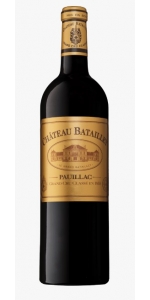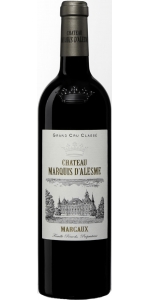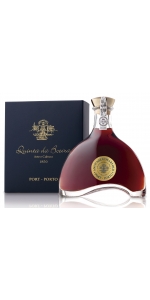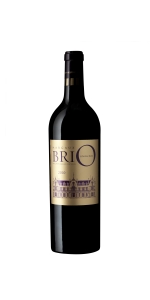Blason d'Issan Margaux 2010
| Country: | France |
| Region: | Bordeaux |
| Grape Type: | Cabernet Sauvignon |
| Vintage: | 2010 |
| Bottle Size: | 750 ml |
All older vintage wines have been purchased from a single collectors cellar. Pictures can be requested before shipment.
Burgo Viejo Rioja Gran Reserva is made from 100 percent Tempranillo. 30 year old vines.
Burgo Viejo Gran Reserva shows a deep red ruby color and offers powerful aromas of blackberry jam, spice, leather, chocolate with toasty nuances. Smooth yet full-bodied with firm tannins and a long finish.
Review:
"Shimmering garnet. Aromas of cherry, blueberry, candied flowers, tobacco and coconut pick up a smoky overtone with air. Smooth and fleshy on the palate, offering ripe red and blue fruit, mocha, cola and spicecake qualities that tighten up on the back half. Finishes long and supple with repeating spiciness, even tannins and a lingering suggestion of red berry preserves. This old-school Rioja was aged for two years in 90% American and 10% French oak. - Josh Raynolds"
- Antonio Galloni's Vinous (April 2021), 92 pts
2010 Burgo Viejo Rioja Gran Reserva - Silver Medal - MUNDUS VINI
Chateau Batailley Grand Cru is made from 78% Cabernet Sauvignon, 19% Merlot, 2% Petit Verdot & 1% Cabernet Franc.
Château Batailley is a winery in the Pauillac appellation of the Bordeaux region of France. The wine produced at the estate was classified as one of eighteen Cinquièmes Crus (Fifth Growths) in the Bordeaux Wine Official Classification of 1855.
Garnet-purple colour. Rich and expressive nose, fruity with notes of spices, smoke and vanilla. On the palate, this wine is supple, round, well balanced, with good acidity, a nice fruitiness and nice notes of leather and cedar. Long elegant finish.
Review:
The 2010 Batailley repeated its magnificent showing when poured at the chateau. It has a detailed bouquet of blackberry and cedar, quite backward and seemingly having advanced lite since | tasted in in April 2016. The palate remains full of tension and brimming with energy, delivering classic cedar and tobacco notes toward the persistent finish. Batailley can produce wines that live many decades, and this is clearly one of them. Tasted at the property. Drink 2020-2050
- Neal Martin Vinous 95 Points
Marquis d'Alesme Margaux is made from 63% Cabernet Sauvignon, 30% Merlot, 5% Petit Verdot and 2% Cabernet Franc.
It has a brownish red color. Intense and complex, aged for many years in French oak. It has an elegant cigar leaf aroma. Dense and round in the mouth with dried fruit, honey and notes of crystallized fruit. A velvety and persistent finish.
RS: 114g/Liter
TA: 3.7g/Liter
No irrigation, Harvest by hand, Port wine traditional method: (Fermentation, with skin maceration, takes place a a controlled temperature and is interrupted by the addition of grape spirits).
Aged in 550 Liters French Oak barrels with an average age of 40 years.
Slightly filtered before bottling.
Pairings: Digestive: Dried fruits, caramel sweets and conventual sweets (portugueuse pastries)
A new wine for the new century: BriO de Cantenac Brown was born in 2001.
Through the style of its label, but also through the quality of our work from the selection of the lots to the bottling, it aims at expressing the modernity of our Château.
The lots supposed to be the main part of BriO are pre-selected because of their evolution all through the year, which means that we focus on each different lot of the winery, from the budburst through the flowering to the ripeness control.
A meticulous attention
The lots for BriO often need more work: more leaf pruning, some green harvest, for example on the young vines, to help them to deal with the weather conditions.
Our two labels are made from vines located on a beautiful terroir where you find gravelly soils, and we want the vinification of BriO to lead to an elegant wine with lots of flavours, a compromise between strength and finesse.
So, if you like the fruits, you can start to drink it from 2 to 5 years after the harvest.
The blend between Cabernet Sauvignon, Cabernet Franc and Merlot is different for each vintage but the Merlot percentage is usually more important than the one in the Château Cantenac Brown.
The 12 months-long ageing in 20% to 25% new oak barrels is traditional; we rack it every 3 months. Before the bottling, we do the fining with egg whites.
It is on purpose if the bottles of BriO are different from the ones of Cantenac Brown: we want BriO to become a brand on its own, and it’s true that we talk much more about “BriO” than about “BriO de Cantenac Brown”.
We want BriO to be a wine you drink before, during and after a meal; just for your pleasure.
All older vintage wines have been purchased from a single collectors cellar. Pictures can be requested before shipment.
- back
All older vintage wines have been purchased from a single collectors cellar. Pictures can be requested before shipment.
Marques de Casa Concha Heritage is made from 84% Cabernet Sauvignon, 12% Cabernet Franc, & 4% Petit Verdot.
Deep, dark red in color with lush flavors of cherries, blackcurrants, blackberries, cedar, and a bit of black tar. It shows a tremendous concentration of flavors and a smooth, almost silky texture framed by a firm tannic structure that truly stands out at the beginning of the long finish.
This wine pairs beautifully with grilled, roasted, or braised red meats and game in sauces that have a bit of acidity, with tomato or wine or with herbs such as rosemary, thyme, and bay leaf. A perfect wine for most cheeses.
100% estate grown red blend from renowned Puente Alto terroir. Chile’s most acclaimed DO. Upon arriving at the winery, the grapes are destemmed and crushed for fermentation, which takes place in closed stainless steel tanks with daily pump overs throughout the entire 10-day process. The new wine remains in contact with its skins for approximately 10 days, when it is devatted and malolactic fermentation is allowed to take place naturally.
The wine then underwent 16 months in French oak barrels, 40% first use, 60% second use.
El Mariscal vineyard is 600 meters above sea level and is made up of 52.95 hectares, of which 46.23 correspond to Cabernet Sauvignon, 4.52 to Cabernet Franc and 2.20 to Petit Verdot; and it has a density of 5,500 plants/ha, vines that come from mass selection and are mostly on loam. Meanwhile, Don Melchor vineyard is 650 meters above sea level and is made up of 125.96 hectares, of which 112.67 correspond to Cabernet Sauvignon, 1.28 to Cabernet Franc, 2.45% to Merlot, 1.28 to Petit Verdot and 8.28 to ground in rotation. It has a density of 2,000 to 4,000 plants/ha, and the new one (20%), planted between 2004 and 2017 and with a density of 8,000 plants/ha. The vines come from pre-phylloxera mass selection and are on loam. The vineyards are located in the Puente Alto denomination of origin, on the northern bank of the Maipo River, specifically on the river’s third alluvial terrace, which is one of the oldest and that instills great character and elegance to the wines that come from there. The soils are of alluvial origin, rocky, poor in nutrients, and highly permeable due to the amount of gravel in the subsoil, which enables excellent drainage. The climate is semi-arid Mediterranean with a strong influence of the Andes Mountains. This is the coldest part of the Maipo Valley. Its pronounced daily temperature oscillation of approximately 18ºC extends the grape ripening process, concentrating and intensifying its aromas.
Review:
Black pepper and cherry give way to hints of chocolate after some aeration in the glass. The same notes show on the palate and blend with bell pepper. This red comes from the alluvial soils in the D.O. Puente Alto and is full bodied, with a firm structure. Moderate acidity is enough to freshen up the finish.
-Wine Enthusiast 92 Points











